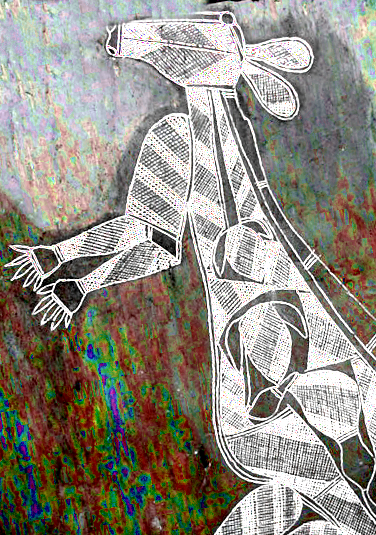AI aimed at ancient rock art

Rock art of human figures created over thousands of years in Arnhem Land has been put through a transformative machine learning study at Flinders University to analyse style changes over the years.
The study has tested different styles labelled ‘Northern Running figures’, ‘Dynamic figures’, ‘Post Dynamic figures’ and ‘Simple figures with Boomerangs’ to understand how these styles relate to one another.
The art was run through software that had been trained on existing data sets of more than 14 million photos of everything from animals such as dogs, cats, lizards and insects to objects like chairs, tables and cups.
In total the computer saw more than 1000 different types of objects and learned to tell the difference between them just by looking at photos of them.
“The important skill this computer developed was a mathematical model that has the ability to tell how similar two different images are to one another,” says archaeologist Dr Daryl Wesley.
The mathematical modelling was then applied to images collected in northern Australia.
“This approach allows us to use the computer program to show how unique the rock art is in the Wilton River and how it relates to the rock art in other parts of Arnhem Land,” Dr Wesley says.
“We can use this to help to show how rock art styles are shared by Traditional Owners in Arnhem Land and which are unique to each group through the past.”
Machine learning allows a computer to ‘learn’ different things about information that may take a human many years to look through and learn from, explains a Flinders University PhD candidate in archaeology Jarrad Kowlessar, who has pioneered the machine learning approach for rock art analysis.
“One amazing outcome is that the machine learning approach ordered the styles in the same chronology that archaeologists have ordered them in by inspecting which appear on top of which,” Mr Kowlessar says.
“This shows that similarity and time are closely linked in the Arnhem Land rock art and that human figures drawn closer in time were more similar to one another then those drawn a long time apart.
“For example the machine learning algorithm has plotted Northern Running figures and Dynamic figures very close to one another on the graph it produces.
“This shows that these styles which we know are closer to each other in age are also closer to each other in appearance, which might be a very hard thing to notice without an approach like this”.
The new methodology removed a large degree of individual human interpretation and possible bias by using a machine learning approach called ‘transfer learning’.
This allowed the computer to understand how each style related to one another directly – independently of the researchers involved.
Researchers are enthusiastic about this methodology's ability to break new ground for a large amount of archaeological research to understand all sorts of different human material culture in a different way.
The full study is accessible here.







 Print
Print